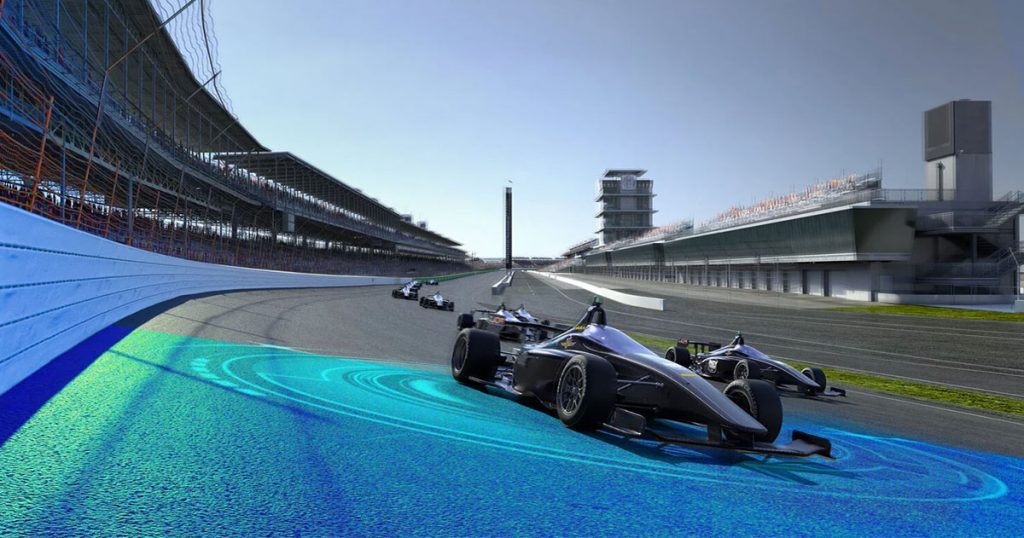The Pinnacle of Innovation: Motorsport’s Influence on Commercial Vehicle Technology
Motorsport, often seen as the zenith of automotive engineering and performance, serves as a crucible for technological innovation. This high-octane environment is not just about the thrill of speed and competition; it’s a dynamic laboratory where groundbreaking technologies are born, tested, and refined. These advancements often trickle down to commercial vehicles, significantly enhancing performance, safety, and efficiency. This exploration delves into how the race track serves as a progenitor for the technologies we see in everyday vehicles.

1. Aerodynamic Alchemy: From Race Track to Road
The quest for speed in motorsport has led to significant advancements in aerodynamics. Techniques and designs tested in the punishing environments of Formula 1 and rally racing have made their way into commercial vehicles, improving fuel efficiency and stability. For example, the sleek and streamlined shapes inspired by racing cars not only reduce drag but also enhance aesthetic appeal, marrying form and function in everyday vehicles.
2. The Semi-Automatic Revolution: Shifting Gears with Ease
The development of semi-automatic transmissions, such as the direct shift gearbox first seen in the Porsche 962, revolutionized the act of changing gears. This blend of manual precision and automatic convenience offers drivers a more engaging yet less cumbersome driving experience, a benefit now enjoyed by a wide range of commercial vehicles.
3. Fueling the Future: FSI and TDI Innovations
Audi’s pioneering work with FSI (Fuel Stratified Injection) technology at Le Mans has had a monumental impact on reducing fuel consumption and CO2 emissions in road traffic. Similarly, TDI (Turbocharged Direct Injection) technology, also honed in the competitive cauldron of Le Mans, has maximized the efficiency and dynamic performance of diesel engines in commercial vehicles.
4. The Hybrid Horizon: e-Tron Quattro and Beyond
Audi’s success with the hybrid drive e-tron quattro at Le Mans underscores the potential of hybrid technologies in enhancing energy efficiency without compromising performance. The principles of energy recuperation and optimized power distribution are now integral to the development of eco-friendly commercial vehicles.
5. Disc Brakes: A Leap in Safety and Performance
Originally introduced by Porsche for the 24 Hours of Le Mans, disc brakes have become a standard in enhancing road safety. Their ability to provide fast braking without locking the steering wheel has made commercial vehicles safer and more reliable.
6. Carbon Fibre: Strength and Lightness Combined
The use of carbon fibre, first popularized in the high-stakes world of Formula 1, has brought about vehicles that are both stronger and lighter. This material’s application in commercial vehicles, particularly electric models, has been pivotal in enhancing performance while managing weight effectively.
7. Active Suspension Systems: Adapting to the Road
The development of active suspension systems, initiated in Formula 1, has greatly improved vehicle handling and comfort on varying road surfaces. By actively adjusting to changes in the terrain, these systems ensure a smoother and more controlled driving experience in commercial vehicles.
8. Steering Wheel Innovations: Control at Your Fingertips
The complex steering wheels of modern racing cars, with their multitude of buttons and controls, have inspired the design of commercial vehicle steering wheels. This has made various functions more accessible to the driver, enhancing both convenience and safety.
9. Turbocharging: Maximizing Power and Efficiency
The refinement of turbocharger systems in the high-pressure environment of motorsport has significantly enhanced engine performance. By forcing extra air into the combustion chamber, turbocharged engines in commercial vehicles offer improved power output without a corresponding increase in size or fuel consumption.
10. Conclusion: The Race to Innovate
The symbiotic relationship between motorsport and commercial vehicle technology is a testament to the power of competitive innovation. As motorsport continues to push the boundaries of what’s possible, we can expect a steady stream of advancements making their way into the vehicles we use daily, driving us towards a future where performance, safety, and efficiency are inextricably linked.
This exploration into the transfer of technology from the racetrack to the road underscores the bold strides being made in automotive engineering, driven by the relentless pursuit of excellence in motorsport. With each lap, each race, and each championship, the future of commercial vehicles is being shaped, promising a journey where the thrill of the race infuses every mile we travel.